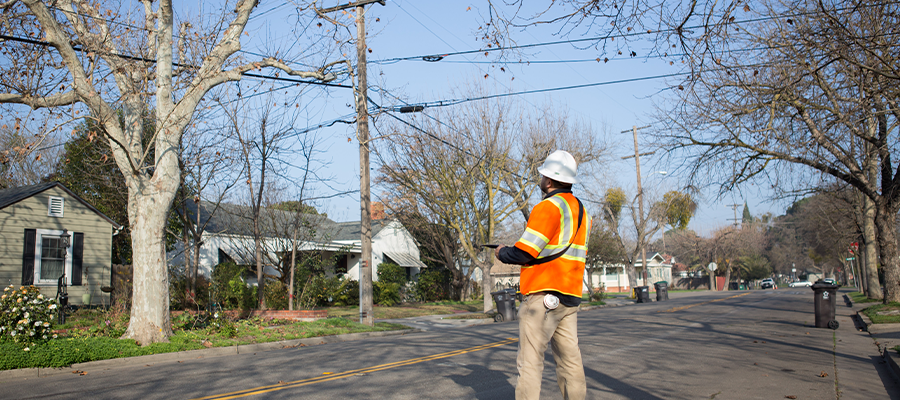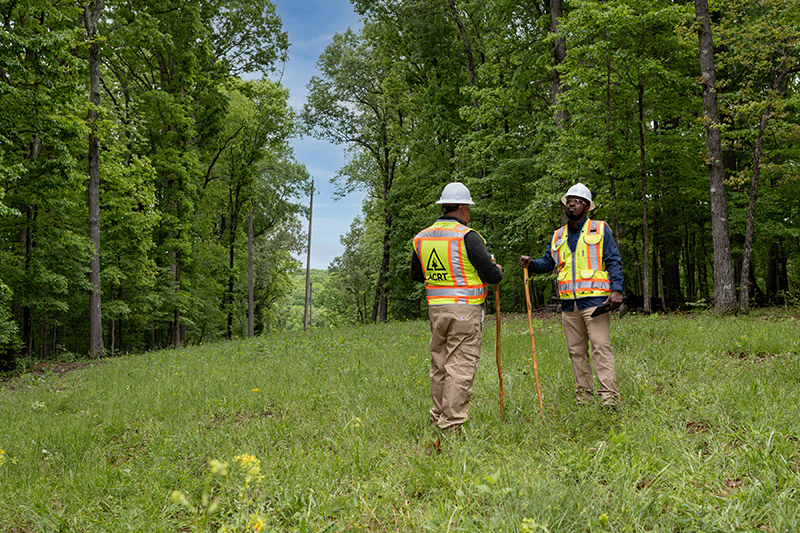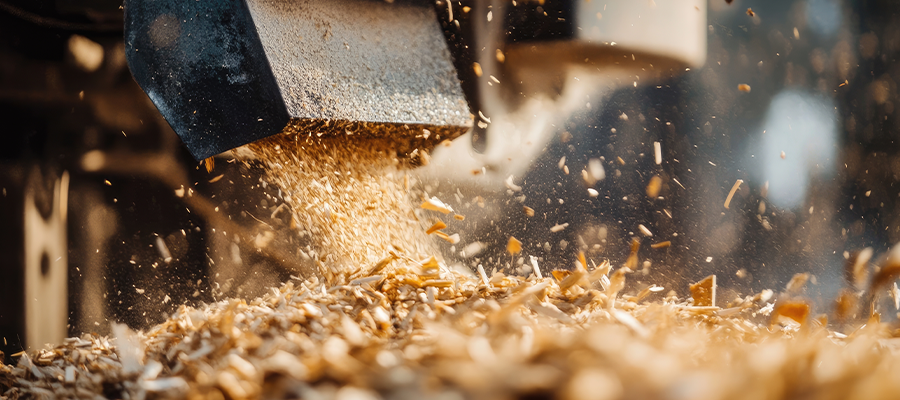- Vegetation Management Services
- Industries
- In Your Neighborhood
- About
- Careers
- Webinars
- Articles
Identifying Tree Species: The Foundation of UVM

Identifying Tree Species: The Foundation of Utility Vegetation Management
Properly identifying tree species is more than an essential skill for those in the green industry — it’s the bedrock of safety, efficiency, and professionalism in utility vegetation management (UVM). From ensuring customer trust to improving hazard mitigation and operational planning, mastering tree identification can significantly elevate the quality of work performed by foresters and vegetation managers.
Why Tree Identification Matters
Correctly identifying tree species is vital for several reasons:
1. Professionalism and Credibility
Customers and utility companies expect accurate knowledge from field professionals. Misidentifying a tree species not only damages credibility but also undermines trust. Homeowners often know the trees in their yards, and an error by the “expert” can create a perception of incompetence, tarnishing both individual and company reputations.
2. Growth Patterns and Pruning Reactions
Each tree species has distinct growth rates and reactions to pruning. For instance, a silver maple grows faster and reacts differently to trimming than a red maple. These differences affect utility infrastructure, making it essential for professionals to tailor their pruning methods accordingly. A failure to account for such variations can lead to improper cuts, faster regrowth, or even structural weaknesses that compromise safety.
3. Hazard Tree Management
Some species decline quickly, while others can remain standing for years before becoming a risk. For example, poplars and white firs often deteriorate rapidly, whereas an incense cedar may take years to fail. Foresters must recognize these patterns to prioritize interventions effectively and mitigate risks to infrastructure and public safety.
4. Improved Collaboration with Tree Crews
Accurate species identification streamlines communication between foresters and tree crews. For example, if a forester lists four trees (e.g., two ash trees, one maple, and one oak) in a yard, this clarity ensures crews address the correct trees, avoiding inefficiencies or errors. On the flip side, mislabeling species creates confusion, increases workloads, and risks missing critical trees, undermining the entire operation.
5. Data Accuracy for Planning and Budgeting
Species-specific data informs utility companies about growth patterns, hazard trends, and budgetary needs. Incorrect identification skews planning, leads to resource misallocation, and reduces the effectiveness of preventative measures. For example, if an area is misreported as containing slow-growing species like oaks instead of fast-growing ones like elms, it can delay necessary maintenance, increasing risks and costs.
6. Arborist Certification
For those seeking International Society of Arboriculture (ISA) Arborist Certification, tree identification is a core competency. Passing the exam requires a solid understanding of tree species and their characteristics. Certification not only demonstrates expertise but also enhances professional credibility, signaling to clients and employers that the arborist meets high industry standards.

Why Use Consulting Utility Foresters?
From savings to expertise, CUFs enhance VM.
Key Strategies for Identifying Trees
Tree identification isn’t just about memorizing species; it involves using systematic techniques to narrow down options and confirm findings.
Breaking Down by Characteristics
- Conifers:
- Pine: Long needles in clusters of 2, 3, or 5. Knowing the pines common to your area, such as eastern white pine in the Northeast or Ponderosa pine in the West, is essential.
- Spruce: Short, sharp, and square needles that roll easily between fingers.
- Fir: Soft, flat needles that cannot be rolled.
- Deciduous Trees:
Branching patterns are a primary distinction:- Opposite Branching: Seen in species like maple, ash, and dogwood.
- Alternate Branching: Far more common, including species like oak, walnut, and poplar.
Leaf Structures
Simple leaves (e.g., maple) feature a single blade, while compound leaves (e.g., ash) consist of multiple leaflets. Recognizing these distinctions significantly narrows down species identification. For example, knowing that a tree with opposite branching and compound leaves is likely an ash simplifies the identification process.
Bark, Fruit, and Other Identifiers
In winter or for trees without leaves, bark patterns, fruit, or seedpods become key identifiers. For example:
- Sycamores have camouflage-like bark and soft seed balls.
- Sweetgums feature hard, spiky seed balls.
- Sassafras bark emits a distinct aroma when scratched, offering a tactile and olfactory clue.
Tree Shape and Growth Patterns
Tree shapes, like the columnar form of sweetgums or the V-shaped growth of elms, offer additional clues. Observing how trees react to pruning also aids in identification. Trees such as willows exhibit distinctive weeping forms, making them easier to identify even from a distance.
The Role of Technology
Field guides and mobile apps provide support for identification but aren’t foolproof. Apps often struggle in dormant seasons or with bark and bud identification. They’re best used as confirmation tools after applying traditional techniques. Despite their limitations, apps like Seek by iNaturalist can help confirm initial guesses, particularly for trees with leaves intact.
Building Proficiency in Tree Identification
To develop expertise, foresters should:
- Use Regional Checklists: Familiarize themselves with species common to their area. For example, knowing that Ponderosa pines are rare in Georgia eliminates them as a possibility when identifying local trees.
- Practice Regularly: Like any skill, repetition improves accuracy.
- Leverage Field Training: ISA Certified Arborists and other training programs provide structured learning paths to enhance identification skills.
Beyond Identification: A Broader Impact
Accurate tree identification extends beyond fieldwork. It supports ecosystem health, ensures compliance with safety standards, and fosters stronger relationships with utility clients and the public. A properly identified tree inventory also aids in future planning, helping utilities anticipate challenges and allocate resources more effectively.
Moreover, tree identification strengthens safety practices in the field. Misidentifying a tree can lead to improper handling, putting workers at risk. For example, failing to recognize a brittle hazard tree could result in injury during trimming operations.
Finally, tree identification encourages collaboration across teams. Utility foresters, tree crews, and utility companies rely on consistent data and clear communication to execute projects smoothly. Accurate identification serves as a cornerstone for this teamwork, enabling every stakeholder to perform their role effectively.
Conclusion
Identifying tree species is more than a task — it’s a responsibility that underpins the success of utility vegetation management. By mastering techniques, embracing technology judiciously, and continually refining their knowledge, foresters ensure safer, more efficient, and more sustainable practices.
The benefits of accurate tree identification are clear: improved safety, better resource allocation, stronger customer trust, and professional growth. In a field where precision matters, honing these skills isn’t just beneficial — it’s essential.
Related Articles

Servant Leadership in Utility Vegetation Management By C. Troy Ross, President, ACRT and ACRT Pacific On a chilly Monday morning, a utility vegetation management crew gathers for their weekly briefing. Instead of launching into instructions, their supervisor begins by asking each team member how they’re doing. One mentions a child’s illness, another shares excitement about[...]
Read More
Turning Vegetation Waste into Opportunity By Aana Agrawal, Sustainability and Resilience Manager, EnviroScience The utility vegetation management (UVM) sector plays a crucial role in ensuring the smooth transmission of power across regions and cities by keeping plant growth under control within the vicinity of transmission and distribution lines. However, unrefined vegetation maintenance practices often focus[...]
Read More
Reflections from Will Nutter Silver Shield Award Recipients By Bob Urban, Senior Manager, ACRT Services In an industry where the stakes are high and every decision can have life-altering consequences, leadership in utility arboriculture isn’t just a managerial function; it’s a calling. Nowhere is this more evident than in the recipients of the Will Nutter[...]
Read More
The Electric Butterfly: Reconnecting with Nature on the Edges By Ryan Meccage, Business Development Manager, ACRT Services In an age dominated by smartphones, constant connectivity, and algorithm-driven content, we’ve never been more digitally immersed. Yet somehow, we’ve also never felt so far removed from the natural world beneath our feet. The urge to step away[...]
Read MoreRecent Posts
- Alex Fields Awarded ACRT Safety Challenge Coin 20th Nov 2025
- Servant Leadership in Utility Vegetation Management 12th Nov 2025
- ACRT Honors Our Veterans 10th Nov 2025
- Anna Davis Awarded Safety Challenge Coin 04th Nov 2025
- ACRT Senior Consulting Utility Forester Recognized as Safety Superstar 15th Oct 2025
Categories
The Leader In Vegetation Management
We are all about people, and we put safety first. Ready to work with our well-trained team?